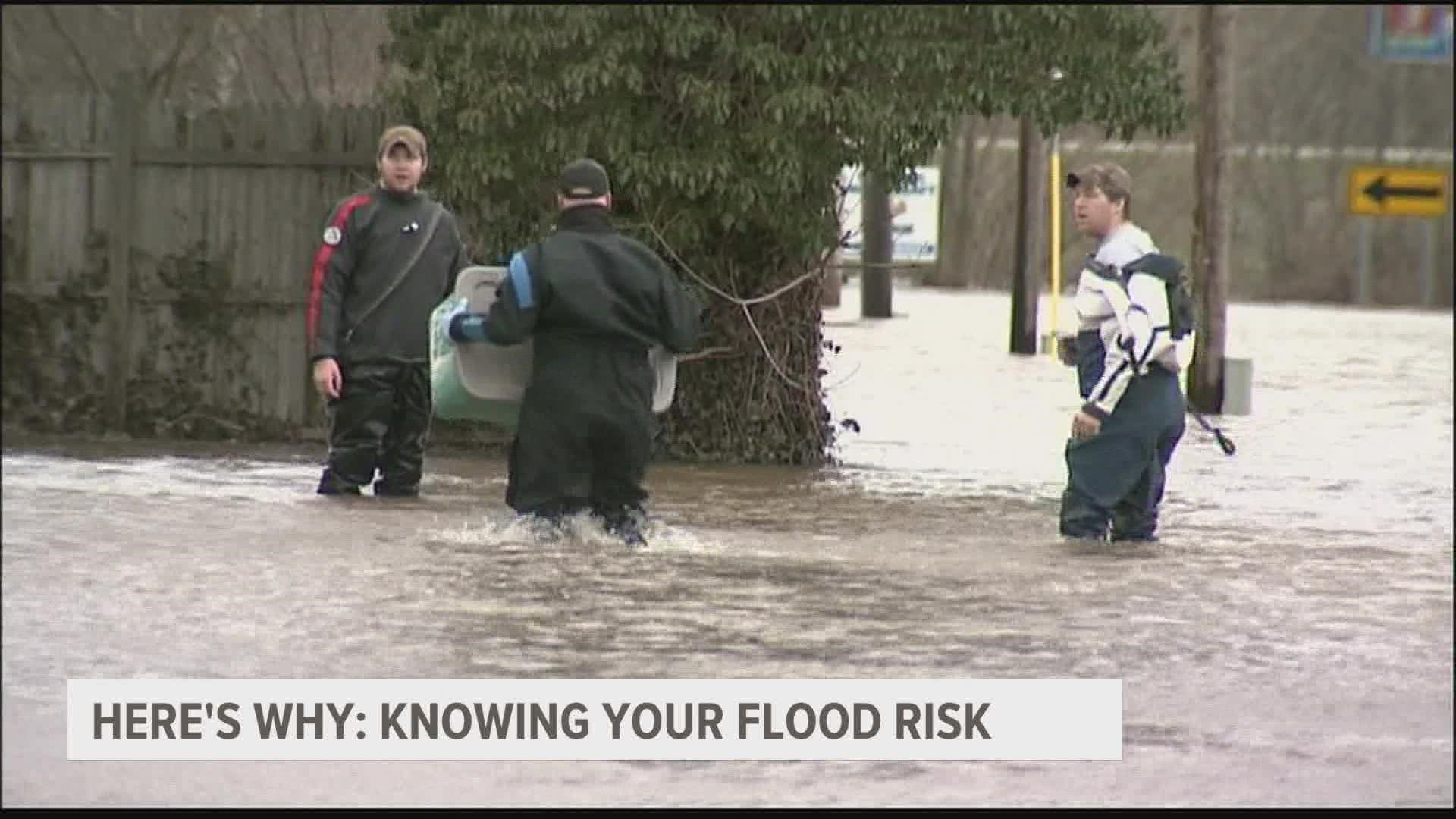GRAND RAPIDS, Mich. — If you live near a body of water you may have heard the term "flood plain" before. This is the area around a waterway that will have a higher risk of flooding during heavy rainfall events and or seasons.
To determine if you live in one of these areas, and if you should have flood insurance as a result, you can decide using maps created by FEMA. However, the maps you will find on this site are just scans of old paper maps that sometimes date back to the 70s and 80s!
That will change next month, when the new maps are released. These new maps will take over starting Feb. 23, and will have the very latest information on which areas are subject to 100- and 500-year flood events.
So, what does this mean and why is it so important?
Let's take a look!
The First Question:
Why is knowing your flood risk so important?
The Why:
The reason knowing the flood zone of your home or business is so important all comes down to lenders. If you have a federally backed mortgage, it may be required that you carry flood insurance. This insurance is usually backed by FEMA and is part of the National Flood Insurance Program (NFIP), if you're in a community that participates.
Many do not know that most of the time flood damage is not covered by their homeowner's or renter's policy. That makes carrying flood insurance in areas that can see major flooding that much more important.
Matthew Occhipinti, a Floodplain Engineer with the Michigan Department of Environment, Great Lakes, and Energy, tells us more about the importance of such policies.
"The biggest benefit to flood insurance is that you've got coverage for your house and potentially your belongings in the event of a disaster. You know, people may have heard that there is some FEMA grant money sometimes available through individual assistance, but that is very difficult to get," Occhipinti said.
"Even if you are someone who may be lucky enough to get it, the amount of individual assistance is so much less than what you would be eligible to get through a flood insurance policy."
For more information on this issue, Matthew recommends visiting floodsmart.gov.
The Second Question:
What exactly is a 100- or 500-year flood anyway?
The Why:
The terms 100- and 500-year flood are a bit of a misnomer for many. The term would imply that such events only happen every 100 to 500 years, which is correct, in the term of general statistics.
In fact, multiple 100- and 500-year events can even happen in the same year, or in back to back years. It's best to think of 100-year floods as a 1% risk in a given year, and 500-year events as a 0.2% risk.


Occhipinti gave us more details about the probability of these events. He said, "Basically, what it means is that in any given year, that 100-year flood has 1% chance of occurring that given year, or it has a 1-in-100 chance of occurring that year. Seems pretty rare, but over the life of a 30-year mortgage, it comes out to about a 1-in-4 chance of that event occurring. So over time, it is a significant risk in those high hazard areas."
Knowing and preparing ahead of time is always the best course of action when it comes to preparing for weather disasters.
Make part of that preparation getting the forecast from 13 On Your Side! We'll always keep you up to date on the latest weather hazards expected in West Michigan!
-- Meteorologist Michael Behrens
Follow me on social media! Facebook Meteorologist Michael Behrens, Twitter @MikeBehrensWX, and Instagram @MikeBehrensWX.
Email me at: MBehrens@13OnYourSide.com
Have a 30-second video or still photo to share? We'd love to share it with everyone! Email your image to Weather@13OnYourSide.com or post it to our 13OnYourSide Facebook Page.
►Make it easy to keep up to date with more stories like this. Download the 13 ON YOUR SIDE app now.
Have a news tip? Email news@13onyourside.com, visit our Facebook page or Twitter. Subscribe to our YouTube channel.

